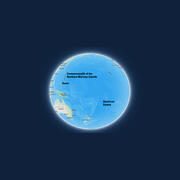The US National Seismic Hazard Model (NSHM) was updated in 2023 for all 50 states using new science on seismicity, fault ruptures, ground motions, and probabilistic techniques to produce a standard of practice for public policy and other engineering applications (defined for return periods greater than ∼475 or less than ∼10,000 years). Changes in 2023 time-independent seismic hazard...
Authors
Mark Petersen, Allison Shumway, Peter Powers, Ned Field, Morgan Moschetti, Kishor Jaiswal, Kevin Milner, Sanaz Rezaeian, Arthur Frankel, Andrea Llenos, Andrew Michael, Jason Altekruse, Sean Ahdi, Kyle Withers, Charles Mueller, Yuehua Zeng, Robert Chase, Leah Salditch, Nico Luco, Kenneth S. Rukstales, Julie Herrick, Demi Girot, Brad Aagaard, Adrian Bender, Michael Blanpied, Richard Briggs, Oliver Boyd, Brandon Clayton, Christopher DuRoss, Eileen L. Evans, Peter J. Haeussler, Alexandra Hatem, Kirstie Haynie, Elizabeth Hearn, Kaj Johnson, Zachary Kortum, N. Kwong, Andrew Makdisi, Henry Mason, Daniel McNamara, Devin McPhillips, P. Okubo, Morgan Page, Frederick Pollitz, Justin Rubinstein, Bruce Shaw, Zheng-Kang Shen, Brian Shiro, James Smith, William Stephenson, Eric Thompson, Jessica Jobe, Erin Wirth, Robert C. Witter










